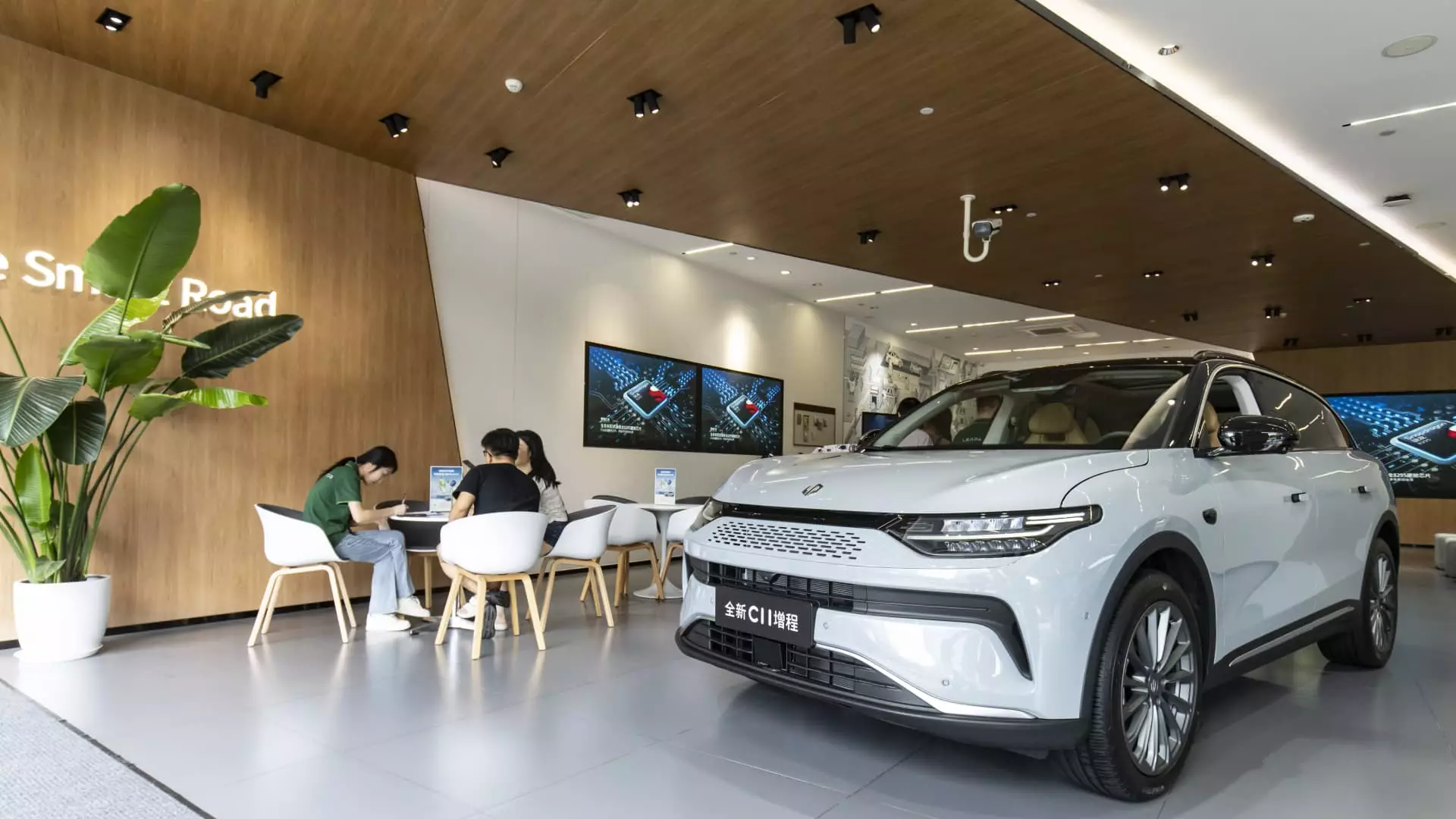As the automotive landscape in China evolves, the popularity of hybrid-powered vehicles is becoming increasingly apparent. Recent data reveals a significant shift in consumer preferences as more buyers gravitate towards hybrids, preferring them over traditional battery-only cars. This notable trend indicates a growing acknowledgment of the hybrid model’s unique advantages, such as extended range and versatility, in a market that is rapidly moving away from purely gasoline-powered vehicles. According to BYD, the market leader, approximately 4.3 million passenger vehicles were sold in 2024, with nearly 2.5 million being hybrids, showcasing a remarkable turnaround from 2023’s figures.
BYD’s dominance in the Chinese automotive sector is underlined by its impressive sales figures. The company not only maintained its lead but also significantly outperformed its rivals, particularly in the hybrid category. This strategy appears to resonate with consumers who may not yet feel confident with purely electric options. In light of this, the upsurge in hybrid vehicle sales is a testament to BYD’s ability to adapt and meet the evolving demands of the consumer market. Their hybrid offerings provide not only an environmentally friendly alternative but also an assurance of more flexible mobility solutions.
Despite Tesla being a pioneer of battery-only electric vehicles, its standing in the Chinese market faces challenges. Following their consistent sales of over 600,000 vehicles annually, analysts are beginning to question how sustainable this growth will be in the face of increasing competition from hybrid models. Industry experts anticipate a saturation point for battery electric vehicles, raising questions about Tesla’s ability to maintain dominance without diversifying its offerings. Added market pressures, such as local startups expanding their hybrid capabilities, may further complicate Tesla’s growth trajectory in this key market.
Li Auto has emerged as a noteworthy competitor, boasting a record delivery of over 500,000 vehicles in the past year. The company specializes in hybrid vehicles equipped with fuel tanks to extend battery life, effectively countering one of the significant limitations of battery-powered cars—range anxiety. As competitors ramp up their offerings in the hybrid sector, established players need to leverage technological innovations to stay competitive. The landscape is not just dominated by established brands; new entrants like Leapmotor are also gaining traction, selling nearly 300,000 cars and targeting rapid growth.
Despite the initial surge in hybrid vehicles, the future for all-electric models is not bleak. However, it is crucial to recognize the impending challenges. Chinese electric vehicle manufacturers such as Nio, Xpeng, and Zeekr have found themselves under increasing pressure to innovate as hybrid models gain prominence. While they still hold significant market shares, their push for batteries only will likely require adaptations to withstand the rising hybrid tide.
Moreover, with societal shifts towards sustainable alternatives, consumer incentives provided by the Chinese government are essential. Cities like Beijing have begun to simplify the application process for new energy vehicles, further propelling their growth amid the rising demand. This strategic governmental approach aligns with China’s overarching aim to bolster domestic automotive production and reduce reliance on foreign automotive brands.
The data showcases an ideological and practical shift within the Chinese automotive market, with hybrids offering a balance between conventional internal combustion engines and all-electric vehicles. As industry stakeholders look towards 2031, projections indicate that hybrid models will continue to capture significant consumer interest alongside battery-only cars. Innovations from various manufacturers, alongside supportive government policies, will likely maintain the momentum of increased sales and ownership of new energy vehicles.
As China stands at the forefront of automotive innovation, the hybrid model’s ascendancy marks a critical juncture that could define the future of mobility in the country. The growth trajectory of hybrids, in tandem with an evolving consumer mindset, hints at a dynamic, multifaceted automotive industry that embraces diversification, sustainability, and technological advancement.


Leave a Reply